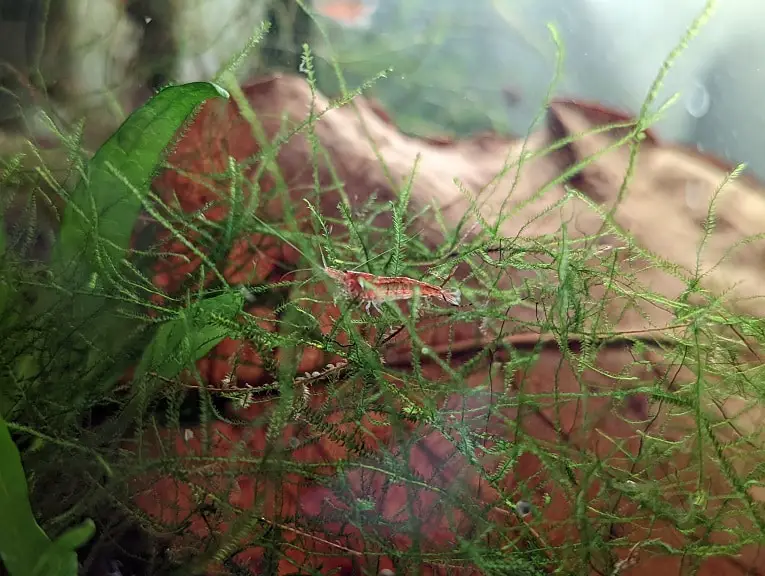If you are trying to build a shrimp-only tank, then you may wonder whether or not it will need a substrate. The answer depends on what you are trying to accomplish.
You can take a look at this guide from Aquarium Blueprints to see what are the pros and cons with adding substrate to your shrimp aquarium.
Quick Summary
While you can build a shrimp tank without a substrate, if is not the optimal environment due to the lack of surface area to grow beneficial bacteria that will help reduce the toxic ammonia, nitrites and nitrates compounds.
A substrate will also provide a solid gripping surface for the invertebrates. Furthermore, it is place for microorganisms, which your pet shrimps will eat, to colonize.
On the other hand, a bare bottom shrimp tank will make it easier to clean and remove shrimps.
If you decide to build a shrimp-only aquarium without a substrate, then we recommend adding natural lava rocks in addition to live aquatic free-floating plants such as Java Fern and Java Moss.
Benefits of having substrate in your shrimp tank
Having a substrate in your shrimp tank should provide the following benefits:
Beneficial bacteria
Shrimps are really sensitive to ammonia, nitrites and nitrates. These nitrogen compound will build up in your tank overtime if you don’t have enough beneficial bacteria.
A substrate will provide surface area for the beneficial bacteria that consume ammonia and nitrites to colonize. If your substrate is deep enough with at depth of at least 2 inches, then the beneficial bacteria specie that consume nitrates will also colonize in your shrimp-only tank.
While the bacteria colonies that consume ammonia and nitrites will also grow on the glass or acrylic of your shrimp tank, a substrate should provide a lot more surface area in comparison. The bacteria that consume nitrate requires surface areas that have a lack of oxygen, which is hard to create in a shrimp tank without a deep substrate.
Food source
A substrate also provides surface area for other microorganisms that will provide a food source for your shrimps to eat in between meals.
Better grip
Having a substrate will also provide a better gripping surface for your shrimps.
While these invertebrates can certainly live only on a glass or acrylic, they will be a lot more stressed out as they will try to hang on the more slippery surface all the time.
Benefits of having a bare bottom shrimp tank
By not using a substrate, you will get the following benefits:
Easier to clean
Cleaning uneaten food, detritus and old discard shrimp shells from your tank is a whole lot easier if you have a bare bottom tank.
With a substrate, these decomposing organic matter may get buried underneath it. If left in your aquarium, these wastes will eventually turn into the aforementioned ammonia, nitrite and nitrate compounds.
Easier to remove shrimps
Having a bare bottom tank should also make it easier to remove any shrimps.
With a substrate, you need to be more careful when it comes to accidentally harming or even crushing the invertebrates if they are situated on a piece of the substrate.
How to build a shrimp tank without a substrate
Building a shrimp tank with a substrate is a little tricky, especially if you are new to the aquarium hobby.
If you are planning to do so, then we recommend that you use natural lava rocks. With this rock type, you will get plenty of surface area to grow beneficial bacteria that will consume ammonia, nitrites and nitrates. Not to mention that microorganisms that will act as a food source for your shrimps should also grow on these rocks.
We also highly recommend that you add live aquatic free-floating plants as well since these will also help remove ammonia and nitrates from your shrimp aquarium waters. Furthermore, plants will also provide surface area for the beneficial nitrifying and consumable microorganisms. In terms of specific recommendations, both the Java Fern and Java Moss can easily grow without a substrate.

Of course, you should also use other standard aquarium equipment such as a heater and filter. For the filter type, we recommend using a sponge filter. If you are using a hang-on-back or canister, then we suggest using a pre-filter sponge in order to prevent your shrimps, especially baby shrimps, from getting sucked inside the filter.
